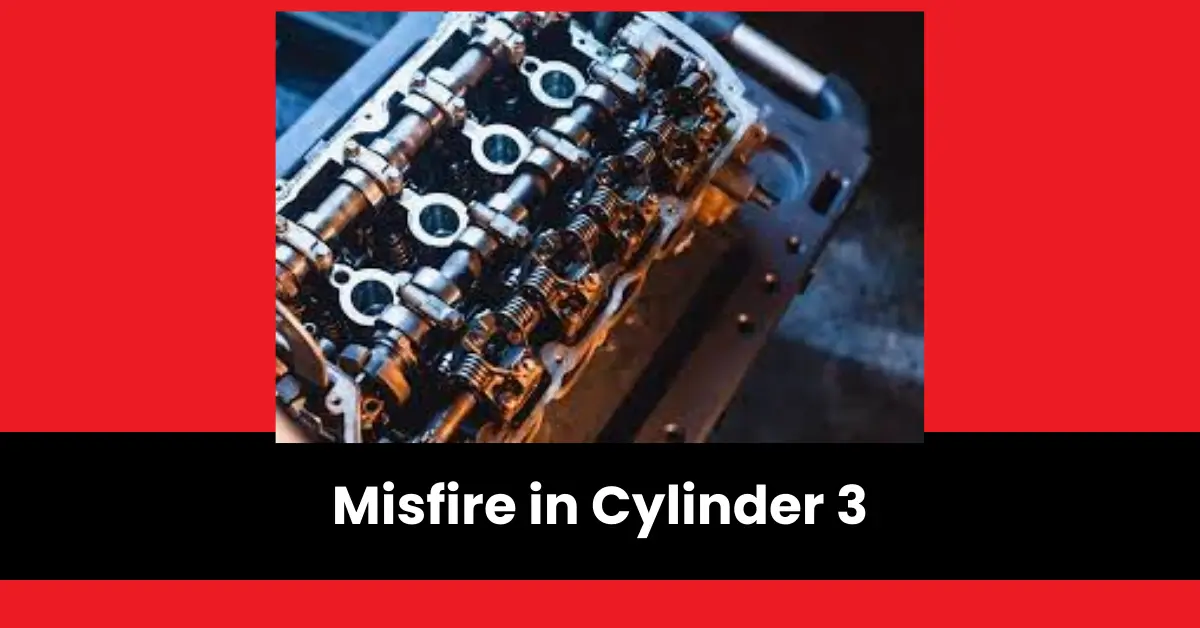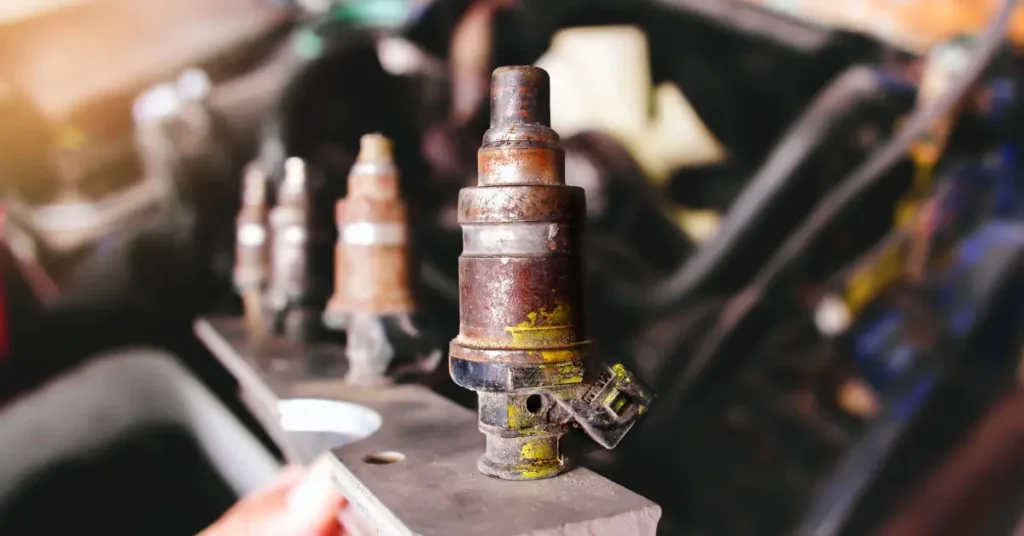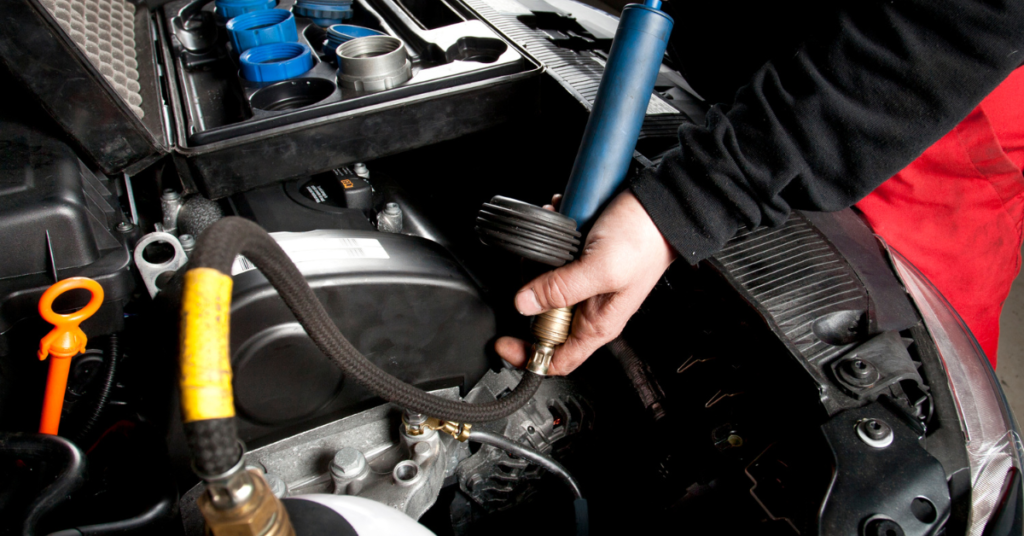
A misfire in cylinder 3 is a common and often troublesome engine performance issue that occurs in internal combustion engines. This problem arises when the air-fuel mixture in the third cylinder fails to ignite or burns unevenly.
The result is a disruption in the engine’s smooth operation, causing noticeable symptoms such as rough idling, reduced power, increased exhaust emissions, and potential damage to the catalytic converter over time.
Detecting and addressing a misfire in cylinder 3 is crucial for maintaining the engine’s efficiency, reducing emissions, and preventing more severe mechanical problems down the road.
Contents
Common Causes of Misfire in Cylinder 3
Ignition System Issues
The P0303 error code commonly indicates misfires in cylinder 3, attributable to several potential causes. Ignition system issues, such as faulty spark plugs, ignition coils, wires, or distributor caps, can significantly impact combustion efficiency over time.
Regular inspection and replacement of these components are crucial to maintain optimal performance and prevent misfires.
Fuel System Problems

Furthermore, fuel system problems like a clogged fuel injector or a malfunctioning fuel pump can disrupt the proper fuel supply to cylinder 3, leading to misfires.
Regular cleaning or replacement of the fuel injector and monitoring the fuel pump’s operation and pressure are essential steps to ensure a consistent fuel delivery system.
Engine Mechanical Issues
Engine mechanical issues are also culprits for misfires in cylinder 3. Low compression, worn piston rings, or damaged valves can contribute to this problem.
Professional diagnosis and repair are often necessary to identify and resolve these underlying mechanical issues effectively.
Vacuum Leaks

Vacuum leaks, arising from air leaks in the intake manifold or vacuum hoses, can upset the air-fuel mixture and cause misfires.
Detecting and repairing these leaks is vital. Conducting a smoke test can help identify even small leaks that might not be immediately visible.
Faulty PCM
Although rare, a malfunctioning powertrain control module (PCM) could be the cause of the P0303 code. Professional diagnostic tools are required to determine if the PCM is at fault.
If found faulty, replacement is necessary to resolve the misfire issue. These diagnostic steps are crucial in identifying the root cause of the cylinder 3 misfire, allowing for precise and effective solutions.
Common Cars that Face Misfire in Cylinder 3
Audi
A cylinder 3 misfire in an Audi typically indicates a problem with the combustion process in the third cylinder of the engine. This issue can lead to poor engine performance, reduced fuel efficiency, and increased emissions.
Common causes may include faulty spark plugs, ignition coils, or fuel injectors, requiring prompt diagnosis and repair to ensure optimal engine function.
BMW
A misfire in a BMW’s cylinder can manifest as a rough idle, loss of power, or erratic engine performance.
Common causes include faulty spark plugs, ignition coils, fuel delivery issues, or vacuum leaks.
Chevy
A cylinder 3 misfire in a Chevy suggests an issue within the combustion process of the third cylinder in the engine. This problem often results in rough idling, decreased power, and potential check engine light illumination.
Causes might involve spark plug malfunction, ignition coil problems, or issues with the fuel injector, necessitating timely inspection and repair for optimal engine performance.
Chrysler
A misfire in cylinder 3 of a Chrysler engine can lead to rough idling, reduced power, and potential vibration.
It often results from issues like faulty spark plugs, a damaged ignition coil, or problems with fuel delivery.
Dodge
A misfire in cylinder 3 of a Dodge engine can cause rough idling, reduced power, and potential engine vibrations.
It issue often leads to a check engine light, indicating a problem in the ignition system or fuel delivery specific to that cylinder.
Ford
In Ford vehicles, a cylinder 3 misfire typically indicates an issue with the ignition system or fuel delivery affecting the third cylinder’s performance.
It can lead to rough idling, decreased power, and potential check engine light illumination.
Timely diagnosis and addressing the underlying cause are crucial to maintain the engine’s optimal performance.
GMC
A misfire in cylinder 3 of a GMC vehicle can lead to noticeable engine roughness, reduced power, and potential vibrations.
This issue often triggers the check engine light to illuminate, indicating potential problems within the ignition system, such as faulty spark plugs, ignition coils, or fuel injector issues specifically related to that cylinder.
Honda
In Honda vehicles, a cylinder 3 misfire suggests a potential problem with the ignition system, fuel injectors, or spark plugs affecting the third cylinder’s combustion.
Symptoms may include rough idling, reduced engine performance, and an illuminated check engine light. Prompt diagnosis and resolution of the underlying issue are essential to ensure proper engine function in Honda vehicles.
Hyundai
A misfire in cylinder 3 of a Hyundai can lead to rough engine performance, evident through symptoms like engine vibration, loss of power, and potentially a blinking check engine light.
This issue might stem from various causes such as faulty spark plugs, a malfunctioning ignition coil, or problems with the fuel injector specific to cylinder 3.
Jeep
A misfire in cylinder 3 of a Jeep typically indicates a problem with ignition or fuel delivery in that specific cylinder.
It issue can lead to rough idling, reduced power, and potential engine vibration.
Kia
A cylinder 3 misfire in a Kia typically points to issues within the ignition system, fuel injectors, or spark plugs affecting the third cylinder’s performance. Symptoms may manifest as rough idling, diminished power, and the activation of the check engine light.
Swift diagnosis and addressing the root cause are essential to restore optimal engine function in Kia vehicles.
Lexus
A misfire in cylinder 3 of a Lexus could manifest as rough idling, decreased power, or an intermittent shaking sensation.
This issue may trigger the check engine light, indicating potential problems in the ignition system, spark plugs, fuel injector, or other related components specific to that cylinder.
Mercedes
A misfire in cylinder 3 of a Mercedes can lead to rough idling, loss of power, and potential engine vibration.
It issue can result from various factors such as faulty spark plugs, ignition coil problems, or issues with fuel delivery.
Mazda
In Mazda vehicles, a cylinder 3 misfire indicates potential problems with the ignition system, fuel injectors, or spark plugs affecting the third cylinder’s combustion.
Common symptoms include rough idling, decreased engine performance, and the illumination of the check engine light. Timely diagnosis and resolution of the underlying issue are vital to maintain the efficient operation of Mazda engines.
Mitsubishi
A misfire in cylinder 3 of a Mitsubishi engine can lead to erratic engine performance, causing rough idling, reduced power, and potential vibrations.
This issue often indicates problems with ignition, fuel delivery, or issues specific to that cylinder, such as a faulty spark plug, injector, or wiring, requiring thorough diagnosis and repair to restore optimal engine function.
Nissan
A misfire in cylinder 3 of a Nissan could lead to erratic engine performance, causing rough idling, reduced power, and potential vibration.
It may trigger the check engine light, indicating issues with fuel delivery, spark plug, ignition coil, or other related components.
Subaru
A misfire in cylinder 3 of a Subaru typically causes rough idling, reduced power, and potential engine vibration.
It may trigger the check engine light, signaling issues with ignition, fuel delivery, or faulty spark plugs in that specific cylinder.
Toyota
In a Toyota, a misfire in cylinder 3 indicates a specific issue in the combustion process of that cylinder, affecting engine performance.
Common causes might include faulty spark plugs, a malfunctioning ignition coil, or potential fuel delivery problems.
VW
A misfire in cylinder 3 of a VW (Volkswagen) engine typically indicates an issue with the ignition or fuel delivery system.
Common causes include faulty spark plugs, ignition coils, fuel injectors, or a vacuum leak. It can lead to reduced engine performance, increased emissions, and potential long-term damage if not addressed promptly.
Volvo
A misfire in cylinder 3 in a Volvo typically indicates a problem with the ignition or fuel delivery system for that specific cylinder.
It issue can lead to reduced engine performance, increased fuel consumption, and potentially cause the Check Engine light to illuminate.
Conclusion
In conclusion, identifying a misfire in cylinder 3 is crucial for efficient engine performance and overall vehicle operation.
It is imperative to promptly diagnose and address the root cause of the misfire, which could stem from various issues such as faulty spark plugs, ignition coil problems, fuel delivery issues, or mechanical problems within the cylinder itself.
Proper troubleshooting and necessary repairs are essential to ensure optimal engine function, prevent further damage, and maintain the vehicle’s reliability and performance.
FAQs
What causes a misfire in Cylinder 3?
A misfire in Cylinder 3 can result from various issues, such as faulty spark plugs or ignition coils, vacuum leaks, fuel injector problems, or even engine timing issues. It could also be due to low compression in that specific cylinder.
How can I diagnose a misfire in Cylinder 3?
You can diagnose a misfire in Cylinder 3 by using an OBD-II scanner to check for specific error codes related to cylinder misfires.
Additionally, conducting a visual inspection of spark plugs and ignition components, performing a compression test, or using a stethoscope to listen for irregular engine sounds can help pinpoint the issue.
Is it safe to drive with a misfire in Cylinder 3?
It’s generally not advisable to drive with a misfire as it can lead to further damage to the engine or catalytic converter. A misfire can cause increased emissions, reduced fuel efficiency, and potentially harm the engine in the long run.
Can I fix a misfire in Cylinder 3 myself?
Depending on your skill level and access to tools, some causes of a misfire in Cylinder 3 can be addressed by DIY enthusiasts.
Replacing spark plugs, ignition coils, or even the fuel injector, if that’s the issue, might be manageable. However, diagnosing and fixing more complex issues might require professional expertise.
What should I do if my vehicle experiences a persistent misfire in Cylinder 3?
If the misfire persists in Cylinder 3 despite basic troubleshooting or DIY attempts, it’s best to seek professional help from a certified mechanic. Continuing to drive with a persistent misfire can potentially cause severe damage to the engine, so prompt attention is recommended.



